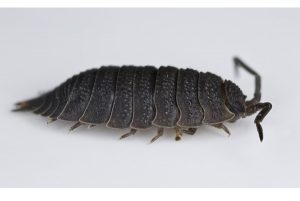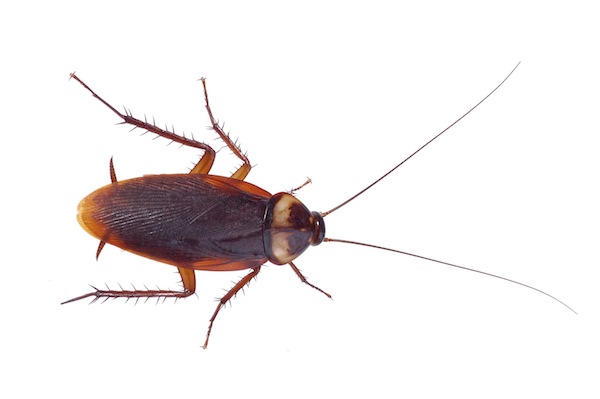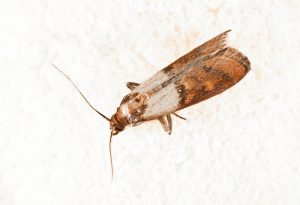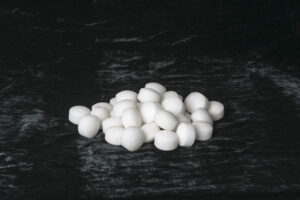
Pest control surface sprays – how do they work?
We’ve all seen the ads – the homeowner sprays the perimeter of the room with an insecticide spray, a cockroach (of the computer animated variety) approaches the treated area and zap – the cockroach is killed by an invisible force field!
But despite the adverts and that such products are often call barrier sprays, is that how these products really work?
The short answer is no!
How to crawling insect surface sprays work?
Crawling insect surface sprays work on the principle that after spraying an area, a thin layer of insecticide remains as a residue on the surface of the material. When an insect walks across this surface, they pick up the insecticide on their legs and body. The insecticide either enters their body directly or as a result of grooming and the insect dies.
The speed of kill depends on the amount of insecticide they pick up and their susceptibility to the insecticide. However, even on a freshly sprayed surface, the insects don’t pick up much insecticide and it will take minutes or even hours for the insect to die. It is therefore quite possible for homeowners to see insects apparently walk across treated surfaces with no apparent effect.
However, assuming the insect has picked up enough insecticide they will eventually die.
Are insecticide surface sprays repellent?
Most surface sprays include a type of insecticide called a pyrethroid. These insecticides tend to be repellent to insects. However, the level of repellency varies depending on the concentration of insecticide on the surface and the type of insect.
Typically the level of repellency is at its highest when freshly sprayed. It is probably this feature that has given rise to the “force field” adverts and the perception that these products create a magic force field to keep insects out of the home. However, the repellency quickly reduces and the main mode of action is the kill properties provided when the insect crawls across a surface.
That said, for wasps and spiders, the repellency effect can last for some time, preventing them from building their nests and webs.
What factors affect product performance and duration of protection?
Surface physical attributes – the availability of the insecticide on the surface depends on the physical properties of the material. On “porous” surfaces such as wood and bricks, some of the insecticide is deposited in small holes in the surface of the material, preventing it coming into contact with the insects. This makes the treatment less effective / shorter in duration. In contrast, all of the insecticide sprayed onto “non-porous” materials, such as sealed tiles, is available for contact with the insect. As a result, the performance on such surfaces is greatly improved.
Surface chemical attributes – certain surfaces react with insecticides breaking them down, shortening the duration of performance. Concrete and brick surfaces, which are alkaline, break down most insecticides and so treatments will not last as long. Painted surfaces can also shorten the residual performance of treatments.
Weather – sunlight (UV) and rain will shorten the residual performance of insecticide treatments. The ultra-violet rays in sunlight break down insecticides. Although some insecticides are more resilient than others, all treatments on areas exposed to the sun will have a far shorter duration of protection. Obviously treatments exposed to rain have the potential to be washed away.
Time – As a function of the surface and weather conditions, the amount of insecticide remaining on a surface will diminish over time. This means that the longer it is has been since treatment, the longer an insect needs to remain on a surface to pick up a lethal dose. At a certain point after treatment the insect will not pick up enough insecticide to be affected – the treatment is no longer effective.
The duration of protection will depend on the product, but typically 3-6 months performance is likely in shaded areas (such as indoors or under the eaves), but as little as one month may be more likely in areas exposed to sun and rain. The good news is that most insects do not tend to nest exposed in the sun and rain and so this “lack of performance” may not impact the overall level of protection.
How do you maximise the performance of a crawling insect surface spray?
Cover a large enough area – when spraying the external perimeter of the house, it is generally advised to spray 1m up the wall and 1m out from the wall. This provides a significant treated area such that insects walking over this area will pick up a larger dose.
Ensure even coverage – make sure you apply the correct amount of product (as directed by the label) and ensure even coverage (with no gaps)
Shake the product before and during use – if the insecticide is not evenly distributed within the container, you will not get an even dose coming out of the container. Some product types require more shaking than others as the insecticide “settles out” quicker.
Re-apply when necessary – for most homes an indoor and outdoor treatment twice a year is enough to keep the insects at bay. However, for floors inside the home that are washed frequently or for exposed areas outdoors or on aggressive surfaces like concrete, more frequent applications will be necessary to maintain a pest free home.





